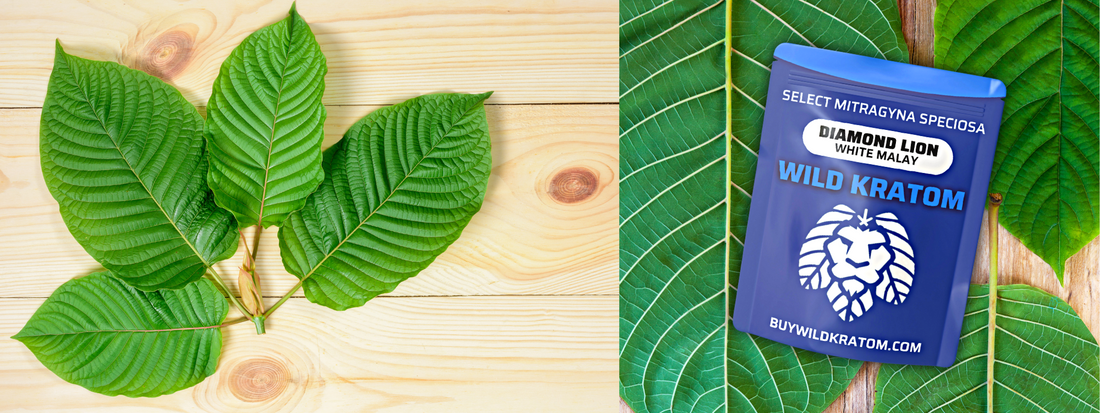
What is Kratom?
Share
Introduction
Kratom is a leaf from a tree that some people with chronic pain or low energy may find beneficial. Southeast Asian tribes have been using the leaves for millennia as a herbal remedy. Alkaloids found in kratom appear to have pain-relieving properties. The two main alkaloids found in kratom are 7-hydroxymitragynine and mitragynine. Although they are not opiates, these substances have a comparable effect on the brain.
Kratom's top three effects appear to be pain alleviation, mood enhancement, and energy boosting. What you need know about this herbal medicine is as follows:
Kratom is a tree native to Southeast Asia (Thailand, Malaysia, Indonesia, Borneo, etc.). Its botanical name is Mitragyna speciosa.
You can buy kratom in any major city in the US and Canada under various names including:
Kratom is in the same family as the coffee tree (Rubiaceae).
Although it belongs to the same plant family as coffee trees (Rubiaceae), kratom is a different species. This huge plant family, which includes more than 20,000 different species of flowering plants, includes both kratom and coffee.
Kratom trees can live up to 200 years and can reach heights of 50 feet. They feature brilliant red stems and tiny scarlet blooms that bloom in the summer on top of their glossy green leaves. Their fruit pods are elongated and have spines on top; within are black seeds. Kratom trees thrive outside year-round without protection from frost or snow damage in humid locations with mild winters (although some people prefer to keep them indoors).
Coffee shrubs are significantly smaller than kratom trees; they only grow to a height of around 6 feet when mature, but they continue to produce berries for a number of years after planting until being severely pruned or uprooted so that new shoots can be produced from neighboring seedlings.
Kratom contains alkaloids that seem to have pain-killing effects.
Although kratom is not an opiate, it does contain alkaloids that have the potential to reduce pain. Alkaloids are chemical substances that are present in both plants and other living things, such as people. Depending on the plant from which they are extracted and the dosage, they can have a variety of distinct effects on the body.
The most significant alkaloid in kratom is mitragynine (MIT), which may be the source of the herb's analgesic (painkilling) effects. Similar to how morphine attaches to mu opioid receptors in the brain, research indicates that MIT may have some addictive potential when used often or recreationally over time. But most people agree that Kratom is not typically addictive.
The two primary alkaloids in kratom are mitragynine and 7-hydroxymitragynine. These are not opiates, but they can affect the brain in a similar way.
The two main alkaloids found in kratom are 7-hydroxymitragynine and mitragynine. Although they are not opiates, these substances have a comparable effect on the brain. When you consume kratom for the first time, you could experience an immediate energy surge followed by an extended period of relaxation.
After regular usage, users claim that kratom not only improves their focus and allows them to go through the day without feeling nervous or agitated, but it also causes them to feel euphoric.
The top three benefits of kratom seem to be pain relief, mood lifting and energy stimulation.
Kratom's top three effects appear to be pain alleviation, mood enhancement, and energy boosting.
The analgesic effects of kratom are similar to those of morphine, but with less negative side effects. It has been utilized as an alternate treatment for opioid withdrawal and chronic pain problems.
Kratom is a tree leaf that might help people with chronic pain or energy issues.
People in Southeast Asia have been using kratom, a tree leaf, for generations because it naturally grows there. Despite not being an opiate, it possesses opiates' effects. There is some proof that kratom helps treat problems with pain, mood, and vitality.
According to certain research, kratom relieves tension on muscles and nerves by suppressing pain signals produced by injuries or illnesses like fibromyalgia or arthritis by activating specific brain receptors. According to these research, when appropriately taken by persons over the age of 18 who weigh less than 150 pounds, kratom has no negative effects on the parts of the brain responsible for respiration (breathing) (68 kg).
Conclusion
An effective natural alternative to opioid medicines appears to be kratom. Additionally, it can improve stress, mood, and energy levels. However, there are certain adverse effects to be aware of, such as nausea or constipation. Never combine kratom with other medications or alcohol as it might cause overdose or even death.
Before beginning any new treatment plan, speak with your doctor first so they can advise you on whether taking kratom will be effective for your needs. This is especially important if you're considering about using this natural substance instead of conventional pharmaceuticals like opiates and antidepressants.
Ready to try out kratom? Check out our online store!
